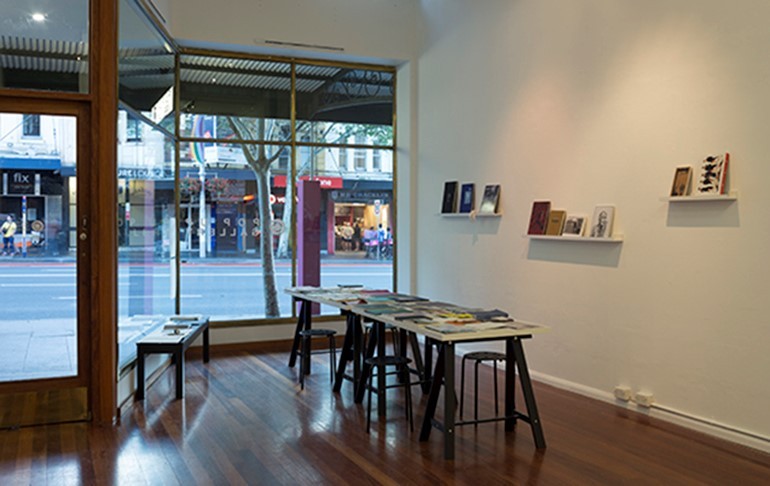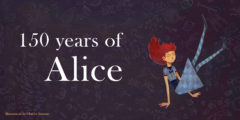About photobooks: ACP interview with Daniel Boetker-Smith

The Australian Centre for Photography recently showed a unique selection of photobooks from the Asia-Pacific region in their Pop Up Gallery. One of their tutors, Michael Waite caught up with Daniel Boetker-Smith, Director of the Asia-Pacific Photobook Archive, to discuss photobooks in the 21st Century and the vibrant Asia-Pacific scene.
Here’s a part of the ACP interview:
Michael Waite: Hi Daniel – can you give some history and background to the Asia-Pacific Photobook Archive?
Daniel Boetker-Smith: The Archive started in 2013, inspired by two organisations – Self Publish, Be Happy, which is London based, and the Indie Photobook Library in Washington, run by Larissa Leclair.

M: How many books are in the archive, and is there a curatorial policy?
D: We have about one thousand books at the moment. We get anywhere between about two and ten a week, but we have a backlog of about one hundred, because there are only two of us, and we are both working full-time. The archive accepts everything that is submitted. As long as it’s made in the Asia-Pacific region, or it’s by an Asia-Pacific photographer – so it can be projects that are shot elsewhere, but by a photographer from the region, or it could be a Spanish photographer photographing in Thailand.
M: How can people access the collection?
D: We have a physical space in Collingwood, Melbourne and we also send collections of books overseas, so at any time we have about three boxes of books in different countries that are travelling around to different festivals. All the books are on the Archive website, every book has its own page, all the details about the book are listed, plus links to the photographer’s website, to their gallery, their publisher, whoever. So we try to make it as easy as possible for someone to go buy the book directly from the photographer.
M: What do you have to say about the current level of interest in photobooks? Many people have made the point that the book is the ideal form of presentation for photography.
D: I think a photobook is important in the sense that if done well it gives you an insight into the way the artist wants that work to be read. It takes you through their thinking, it takes you through, in a way, their experience of making the work as well. The book gives you an added extra in terms of the way to absorb the message, if you like, to interact with the story the photographer’s telling you. So I think that’s been a large part in terms of the way people have become interested again in the book. When they’re putting them into a book, you’re getting a sense of the way the artist has thought about aspects such as the texture of the paper, the feeling of the cover.
I’m a photographer as well, and I think what the book allows me to do is not think about single images. It’s more akin to thinking about, and some writers have written about this idea, of the photobook as a novel, the photobook as a song, and I think in a way the process of shooting for a photobook takes you out of that pressure of the single image.
So the context of the images with each other and the text, and the nature of this small intimate little book that you have in your hand – it all works to give the viewer something else. Also, in regard to this idea of shooting for a book – I’ve made plenty of books that no one will ever see.
M: Just for yourself?
D: Yes. And the same thing, I might shoot over a weekend then put this book together, and it’s just fifteen images, stapled, and it’s just a way of processing something that you might come back to in a year or two and do something else with it, or you might not. It’s like keeping a journal at art school. It gives you a way to reflect on the images, and it gives you a physical form to start to compare things to, which you can’t really do on a screen – you can’t compare twelve images on a screen to each other, it’s impossible.

M: Do you find generally with the books in the archive the photographic artist has been responsible for it 100% or do people quite often bring in a book designer to help them?
D: It depends on the nature of the work. In terms of the more zine sort of culture, that’s usually the photographer doing it all themselves, and then you have next stage where maybe it’s still digitally printed but a small edition, but perhaps it’s a bit more serious in terms of the binding, or a more substantial body of work. In these cases, most people do go and talk to someone, perhaps a friend who has some design experience.
But most of the best books, the ones that have been really successful in the last five years, they’re all collaborations – between the photographer, designer and publisher.
There is no one who’s ever said “the best work is made in isolation”, and I think it’s part of the project of the archive as well – the more books people see, the better they get about thinking about them and thinking about their work, and I think that’s another thing that’s really important, that as you think about the book format, it changes the way you shoot.

M: So I’m photographing, not just because I’m walking around randomly photographing, but I’m thinking “this will be in the book” and it will be a big book or a small book?
D: Exactly. And there’s different ways of doing it. I think that some books are made where the body of work is done, and they think “ah – this could be a book” afterwards, which is fair enough, happens all the time. But one of the classes I teach at Photography Studies College, we start from day one with the understanding that we’re going to make a book, so it’s kind of an unnatural process – you are shooting from day one for a book that you don’t know what it is going to look like, you don’t know how big it is going to be, what the work will be even about, but what it means is they actually start to look at books to generate ideas and what always comes out is the simplest things are the best.
In thinking about making a book from the start, you can actually begin from a very simple premise. Whereas when you think about a body of work, it’s almost over-conceptualising – “I’m going to do this project about this place, and I’m going to do this research”, all those things, whereas The Good Earth book for example, which is just here, (2012 published by 88 Books,) this is probably my favourite book in the whole archive, by Li Kejun, and it’s just pictures he took in a Chinese village of farmers laughing. And he’s got this weird lens, so they all look sort of strange. It’s printed on office paper and stapled but actually, it’s perfect – in terms of what it does, it’s perfect.

M: Why did you decide to concentrate on the Asia-Pacific region?
D: I knew there was a gap there, and I knew there was a gap there because the gap was in my own knowledge. I’d just come back from Europe, and I wanted to get some knowledge about what was going on in the region and this was a way for me to do that. And it’s also being realistic about what’s going to happen in the future, it’s obvious that the Asia-Pacific region is the one that’s going to expand in terms of photographic production, there’s so many countries that are in, or coming through, a political situation where they need to have these sort of outlets and discourses.
So over the next twenty years the content coming out of those countries is going to be huge and really important. We need something in this region, because there’s so much happening in these countries that no one is seeing. It’s important because the economic, political, social impetus in the Asia-Pacific region is so vital at the moment.

M: One thing I like about this exhibition at the ACP is how the books are displayed on tables, and I can just pick them up and feel them with my fingers, not having to wear white gloves, or view them through a glass case.
D: That’s why people make the books, so people can actually see them and touch them and experience them – that’s the whole point of it. I’ve been asked – how do you manage the longevity of the books in terms of storing them and looking after them, and my answer was that you have to give up one or the other. Either they’re in a place, and they’re wrapped in plastic so they’re secured forever, or they have much more presence physically, they are able to travel to places, people are able to see them and to touch them, to smell them, and that’s what it’s about. That’s the balance, you either make it accessible or you don’t. If it’s accessible there is the danger of it getting damaged, but that’s okay, and I think most photographers would be happy that their books are getting seen, rather than sitting on a shelf somewhere.
Contributed by The Australian Centre for Photography.
All photos ©ACP Michael Waite.
Read the full version of the interview here.



Write a comment